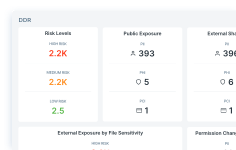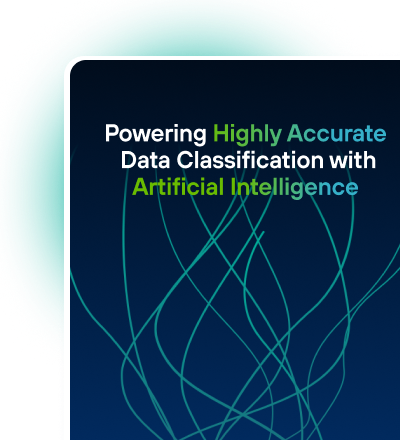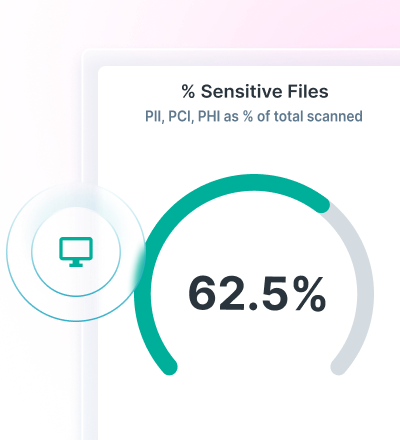
Forcepoint DSPM
A Proactive Solution
for Data Security and Compliance
Discover and classify sensitive data with AI-powered precision to proactively prioritise and remediate data risk.
Get Visibility and Control Over Sensitive Data
Shine a light on dark data with extensive data discovery and highly accurate classification.
Forcepoint DSPM software scans any data source and uses proprietary AI Mesh technology to identify, categorise and remediate high-risk data.
It’s a perfect solution if your security teams struggle with:
Large amounts of shadow data
Over-permissioned data
GenAI data leakage risks
Unidentified data locations


Pinpoint Accuracy and Transparent Reporting
Enda Kyne, CTOO at FBD Insurance, says that DSPM and DDR has been embraced by his IT security and data protection teams for their ability to control critical data and report activity to regulators.
Forcepoint DSPM Software Leads the Pack
Forcepoint is the only Data Security Posture Management vendor that uses AI Mesh technology to deliver highly accurate data classification. Read the full comparison chart to learn why organizations trust the leading data security provider to discover and catalogue data and remediate risk at scale.
Read Full Comparison20%
40%
60%
80%
100%
Forcepoint
Traditional Vendor
Data Governance
Vendors
Forcepoint DSPM Solution vs. the Competition
Forcepoint | Traditional Vendor | Data Governance Vendor | |
Data Classification
| |||
Data Discovery
| |||
Scalability
| |||
Analytics Suite:
| |||
Incident Analysis
| |||
Customization and Extensibility
| |||
Risk-based Approach
|
Product comparison is based off of in-product capabilities and cross-portfolio integrations available from the same vendor as of May 7, 2024. Comparisons do not include integrations with third-party vendors. Feature comparison is based off of each vendor’s most recent and modern version available as of May 7, 2024. Information is based off of data collected from public websites and forums, analyst papers, and product datasheets as of May 7, 2024.
Why Forcepoint is a Top-rated DSPM Vendor
Improve Data Visibility
Gain complete visibility into data across both cloud and on-premises environment to track and manage sensitive data wherever it resides.
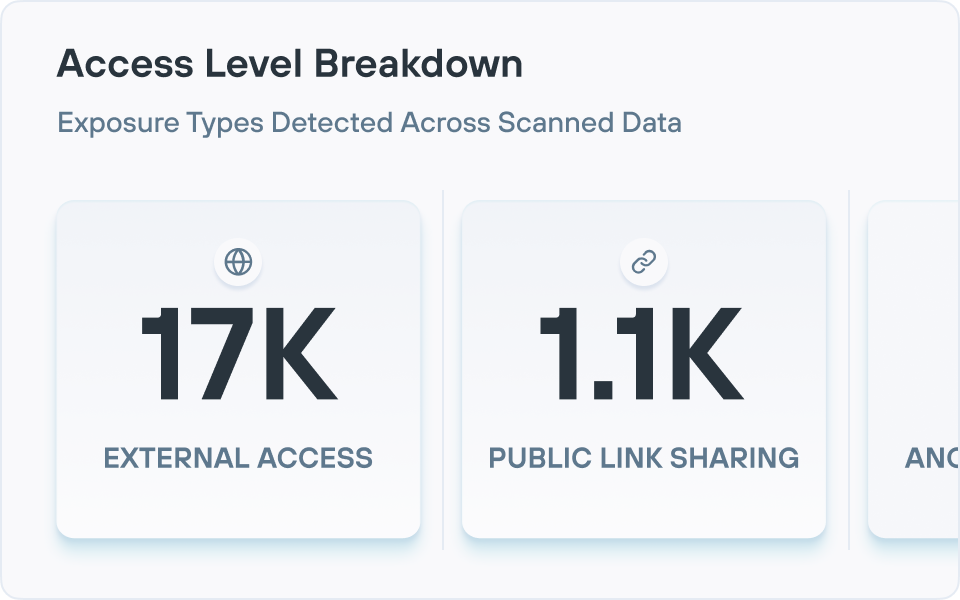
Discover and Classify with AI
Utilise highly accurate AI Mesh technology for efficient and reliable data discovery and classification, reducing false positives and enhancing incident alert accuracy.
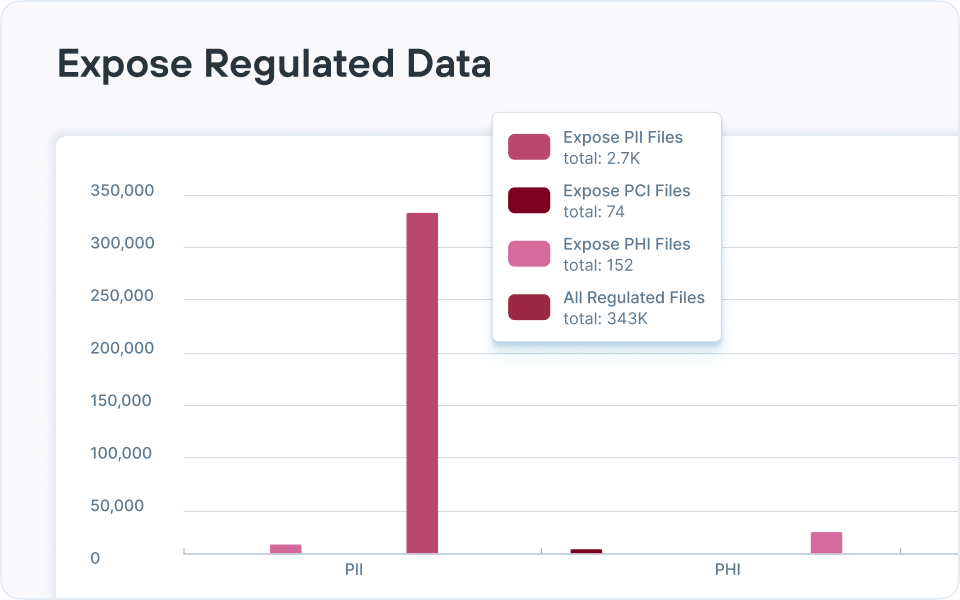
Proactively Remediate Risk
Actionable insights enable you to manage permissions, move misplaced data and address data sovereignty, access and duplicate or ROT data issues.
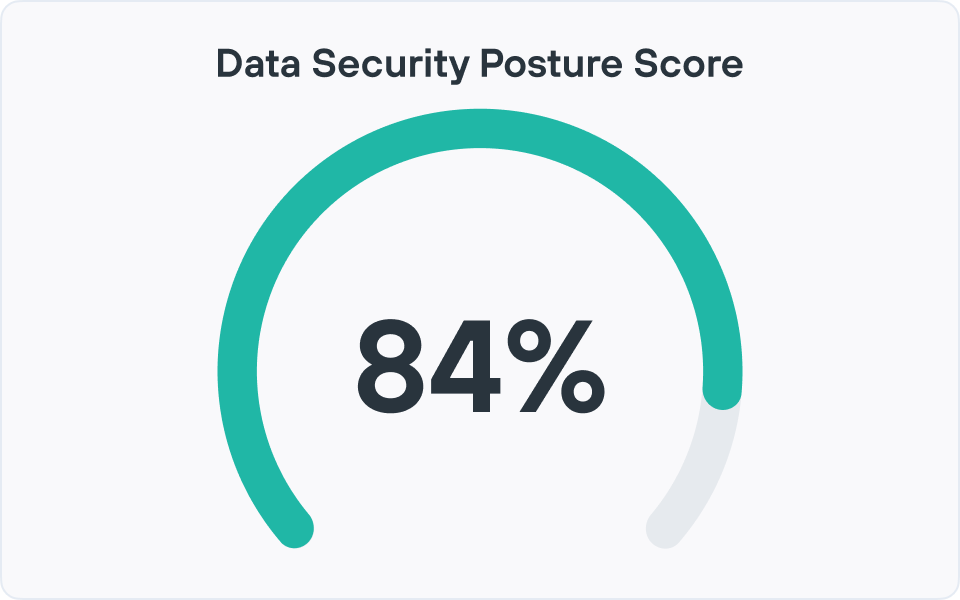
Automate Compliance Management
Simplify compliance processes with automation to ensure consistent and continuous alignment with evolving regulations, reducing manual effort.
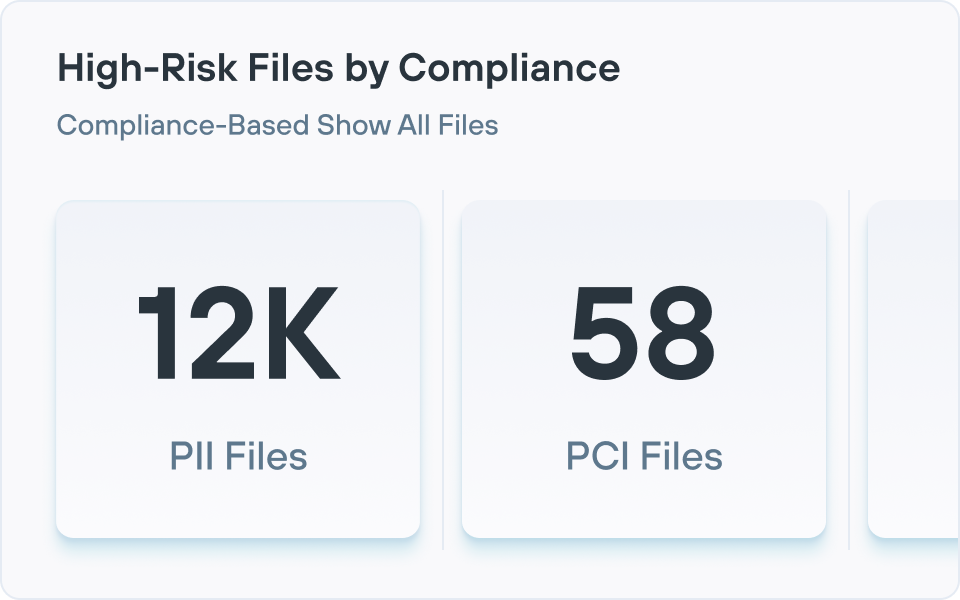

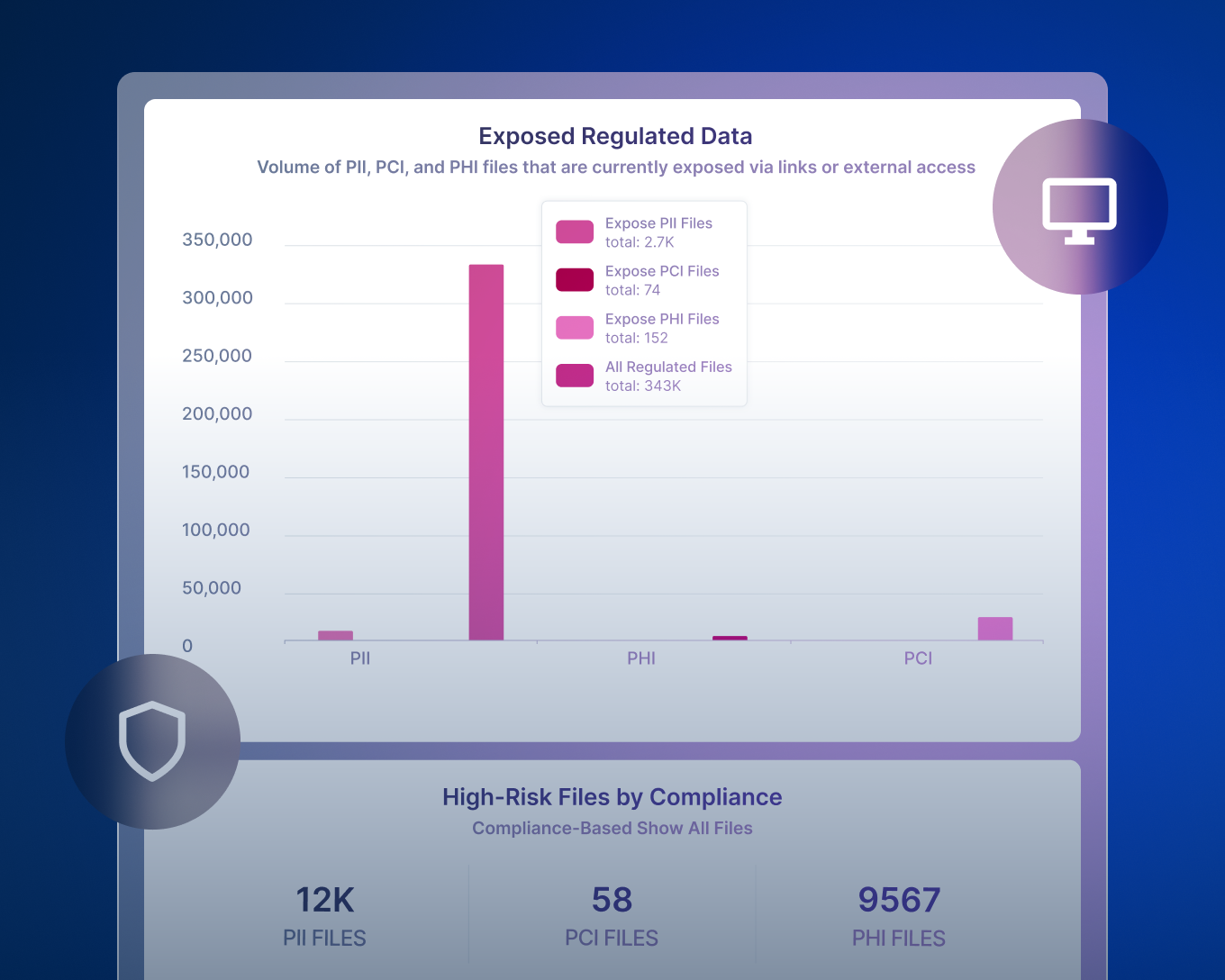


Ability to integrate DLP, DSPM and DDR for data discovery, classification, protection and remediation.

Provides effective risk reporting, allowing you to see ROT (redundant, obsolete, trivial) data, over-permissioned data, data sovereignty issues and many others that make the overall data posture risky.

Offers visibility and control into data readiness for all GenAI applications. It is also able to secure Copilot and ChatGPT Enterprise usage.
What Real Customers Are Saying
What Real Customers Are Saying
"As part of Forcepoint’s broader data security ecosystem, DSPM has integrated seamlessly with our existing solutions. It’s an essential component of our overall data security strategy."
Indonesia Financial Group (IFG)


Is Your Data at Risk?
A data risk assessment proactively discovers threats to your data, whether it's unclassified sensitive files or overpermissioned users. Get a free data risk assessment with Forcepoint to see DSPM in action and learn how safe your data is.
Analyst recommended.
User approved.
Forcepoint is consistently ranked among the top Data Loss Prevention software solutions and data security software providers by users and industry analysts.
Forcepoint has been named a Leader in the IDC MarketScape: Worldwide DLP 2025 Vendor Assessment.
Forcepoint named the 2024 Global DLP Company of the Year for the second consecutive year by Frost & Sullivan.
Forcepoint recognized as a Strong Performer in The Forrester Wave™: Data Security Platforms, Q1 2025.
Implement Data Security Posture Management Best Practices
Frequently Asked Questions
What is Data Security Posture Management (DSPM)?
DSPM is a security solution that enables enterprises to discover and classify structured and unstructured data across file storage locations, such as cloud applications or on-premises. It also helps to proactively address incident remediation.
Learn more about Forcepoint’s data security posture management tool through our comprehensive guide.
How do DSPM solutions work?
Structured and unstructured data is littered across Software-as-a-Service (SaaS) applications, Infrastructure-as-a-Service (IaaS) locations and on-premises storage, making it difficult to get a handle on where the most important and sensitive information is. DSPM provides the visibility and control needed to secure this complex environment.
How do DSPM software’s data discovery capabilities work?
DSPM continuously discovers data across cloud, network and on-premises storage to uncover and catalogue every piece of data your organisation has. Finding sensitive data is the crucial first step in protecting it. DSPM solutions scan your entire data ecosystem such as:
- Cloud platforms (AWS, Azure, GCP)
- SaaS applications (Microsoft 365, Salesforce)
- On-premises storage and databases
Modern DSPM software maintains continuous visibility as data moves and changes through built-in functionality or solution integrations.
What data classification and risk assessment abilities does a DSPM solution provide?
Once discovered, data must be categorized and evaluated for risk exposure. Modern DSPM solutions typically employ advanced AI-driven techniques in this critical phase:
- AI detectors identify regulated information (SSNs, credit cards, health records) and proprietary data using sophisticated recognition capabilities that surpass traditional pattern matching approaches.
- AI summarisers analyse contextual signals like location, access patterns, user behaviour and business relevance to understand data meaning and usage.
- Rich classification assignment provides comprehensive data insights that extend well beyond basic Public/Internal/Confidential/Restricted labels, delivering detailed information about file content, business context, regulatory implications and specific risk factors.
These advanced classifications are then combined with protection controls, access permissions and compliance requirements to generate dynamic risk scores. AI-powered classification has become a baseline functionality for usable DSPM platforms, with modern solutions leveraging multiple AI types working together including GenAI, deep neural network classifiers and specialised detection engines to continuously improve both classification accuracy and risk assessment.
How does a DSPM platform help organisations manage and remediate risk?
Identifying issues without resolution creates little value. Modern DSPM platforms bridge this gap with customisable controls that adapt to your organization's unique needs and challenges. These controls include permissions management to implement the Principle of Least Privilege (PoLP), ensuring users only access files required for their tasks and addressing over-permissioned or publicly accessible data. Additional capabilities include data mapping to properly categorise sensitive information, mislocated data remediation to address files stored in inappropriate repositories and data archiving/deletion workflows for managing at-risk files past retention periods or classified as ROT (redundant, obsolete, trivial).
How do reporting and analytics work within DSPM software?
DSPM solutions include reporting and analytics tools that provide visibility into an organisation's overall data security status. These reporting capabilities typically feature dashboards showing where sensitive data exists across environments, highlighting specific risk factors such as ROT (redundant, obsolete, trivial) data, over-permissioned files, mislocated information and duplicated content. Security teams can use these insights to track metrics over time and prioritise remediation efforts where they'll have the greatest impact.
What are the different ways you can deploy a DSPM solution?
DSPM solutions offer flexible implementation options:
- Cloud-native SaaS for rapid deployment
- Hybrid models for sensitive environments
- On-premises for control over data sovereignty
- Agentless architectures to minimise overhead
Most enterprises start with their most critical data repositories and expand coverage incrementally.
How does AI and automation enhance Data Security Posture Management?
Automation enables continuous, large-scale data discovery and scanning across enterprise environments. Organisations can now automatically classify data in real-time as it's created, moved or modified—eliminating the delays and gaps inherent in manual reviews. Artificial intelligence's primary value lies in delivering highly accurate data classification while reducing false positives. AI brings the precision needed to confidently distinguish between truly sensitive data and benign information that might trigger traditional rule-based systems. For DSPM solutions to confidently incorporate these capabilities, modern solutions must handle a wide range of file types, from PDFs to video, as well as understand an even broader array of data fields to assign correct classifications and adjust for compliance requirements. This includes leveraging GenAI capabilities, deep neural network classifiers and other predictive AI technologies working together.
What are the key benefits organisations could get from implementing a DSPM platform?
The benefits of Data Security Posture Management can boil down to four outcomes:
- Increase productivity
- Cut costs
- Reduce risk
- Streamline compliance
Does DSPM integrate with other security technologies?
DSPM rarely operates in isolation. Most organisations integrate it with complementary security technologies to create a comprehensive data protection strategy. The insights DSPM software provides about data location, sensitivity and risk naturally enhance other security tools such as:
- Data Detection and Response (DDR)
- Data Loss Prevention (DLP)
- Cloud Access Security Broker (CASB)
- Identity and Access Management (IAM)
- Cloud Security Posture Management (CSPM)
How does DSPM differ from legacy data classification tools?
Unlike traditional tools that work with known data repositories using predefined rules, DSPM continuously discovers both known and unknown data across environments, leveraging AI for more accurate classification and providing context about access patterns and security controls.
What organisational roles should be involved in DSPM implementation?
Because successful DSPM deployment requires collaboration beyond security teams, many organisations establish a data risk committee to regularly review DSPM insights and coordinate remediation efforts. This could include IT infrastructure managers, data governance specialists, compliance officers and business unit representatives who understand departmental data value.
How can organisations measure DSPM ROI beyond compliance?
You can track metrics such as reduction in sensitive data exposure (attack surface reduction), time savings in data discovery processes, improvements in mean-time-to-remediate incidents and reductions in storage costs from eliminating redundant or obsolete data.
How does Forcepoint DSPM outperform other DSPM vendors in risk remediation capabilities?
Unlike many data security posture management vendors, Forcepoint offers granular risk remediation with built-in task manager functions for data custodians, data deduplication and advanced alerting system controls. These capabilities give teams the tools to act on risk — not just see it. Forcepoint's DSPM solution also enables permission analysis, ROT file management and integration with data loss prevention (DLP) to enforce policies in real-time. This holistic integration streamlines remediation across environments, which most DSPM vendors treat as separate silos.
What makes Forcepoint's AI capabilities unique among DSPM vendors?
Forcepoint stands out from other data security posture management tools by offering customised AI model training for unstructured data. This enables organisations to tailor AI-based classification to their specific risk landscape. With AI Mesh technology and in-line DLP fingerprinting, Forcepoint's DSPM solution supports rapid discovery and context-aware classification with unmatched precision. Few DSPM vendors offer this level of AI customisation, especially when applying deep neural network classifiers across hybrid environments.
Which Australian data security standards and regulators does Forcepoint DSPM help compliance with?
Forcepoint's DSPM solution aligns with key Australian frameworks overseen by the OAIC, ACSC and APRA.
- It supports the Privacy Act 1988 and its 13 Australian Privacy Principles (APPs) by tracking personal and cross-border data flows, crucial for enterprises over the AUD 3 million turnover threshold.
- It also supports implementation of strategies recommended in ACSC’s Essential Eight and the Security of Critical Infrastructure Act 2018 (SOCI Act) components, such as proactive cyber incident reporting and vulnerability assessments for critical data assets.
- Financial institutions benefit from APRA-regulated requirements, including CPS 230, with Forcepoint automating audit trails and policy enforcement to simplify regulatory oversight.
How does Forcepoint DSPM support Australian companies operating across borders, including data transfers to the US, UK or APAC?
Forcepoint DSPM gives Australian organisations complete control over cross-border data transfers, which is critical when dealing with offshore teams, SaaS platforms or global clients. It tracks where sensitive data is stored, how it moves and who accesses it — whether in Sydney, Singapore or San Francisco. Its classification engine supports rules aligned with Australian Privacy Principle 8 (cross-border disclosure) and international standards like GDPR and CBPR, helping businesses stay compliant across jurisdictions.
With location-aware policy controls, Forcepoint can restrict, reclassify or quarantine data that shouldn’t leave Australian infrastructure. Among leading DSPM vendors, it offers standout clarity and control for managing cross-border data risk.


